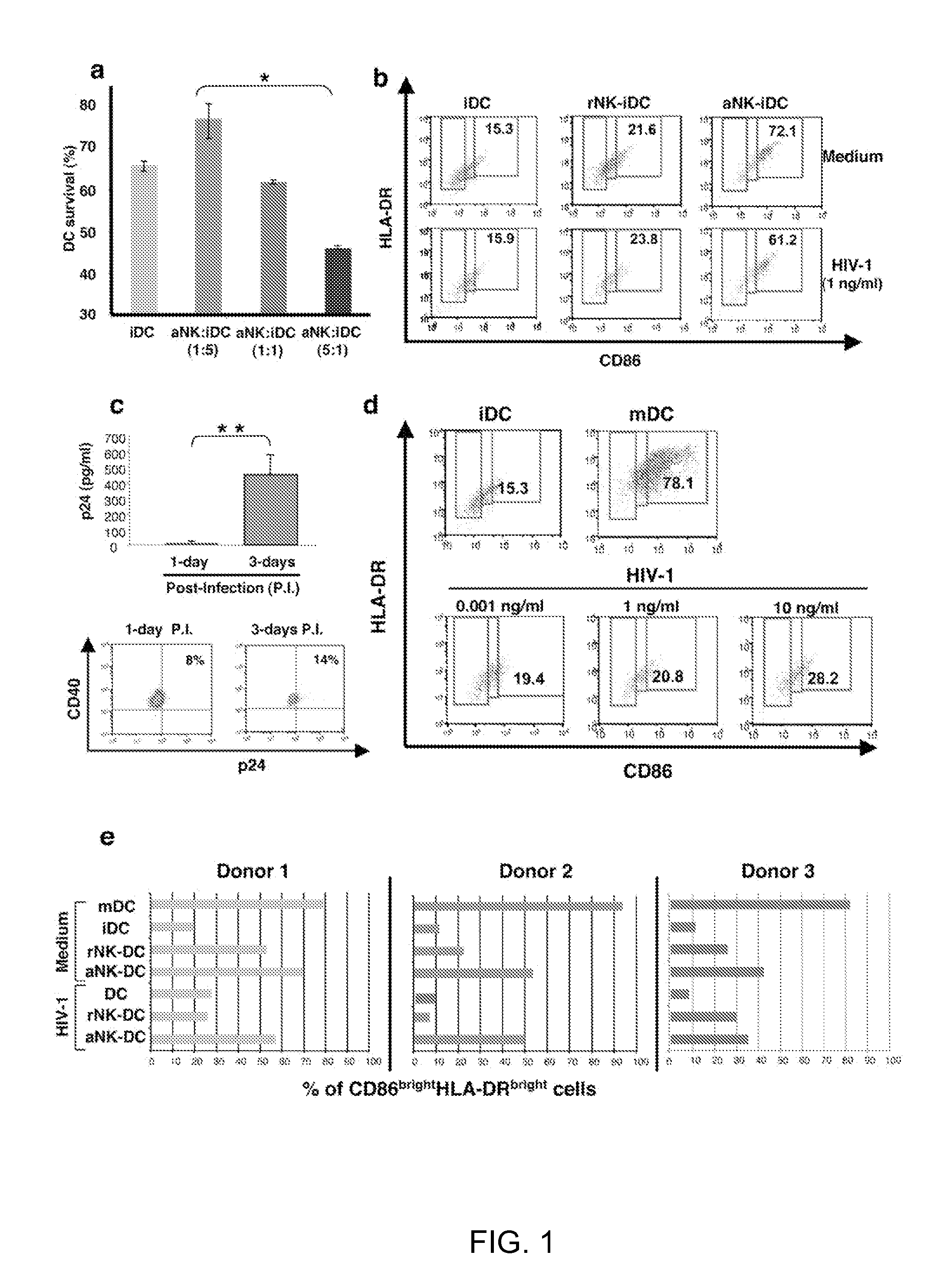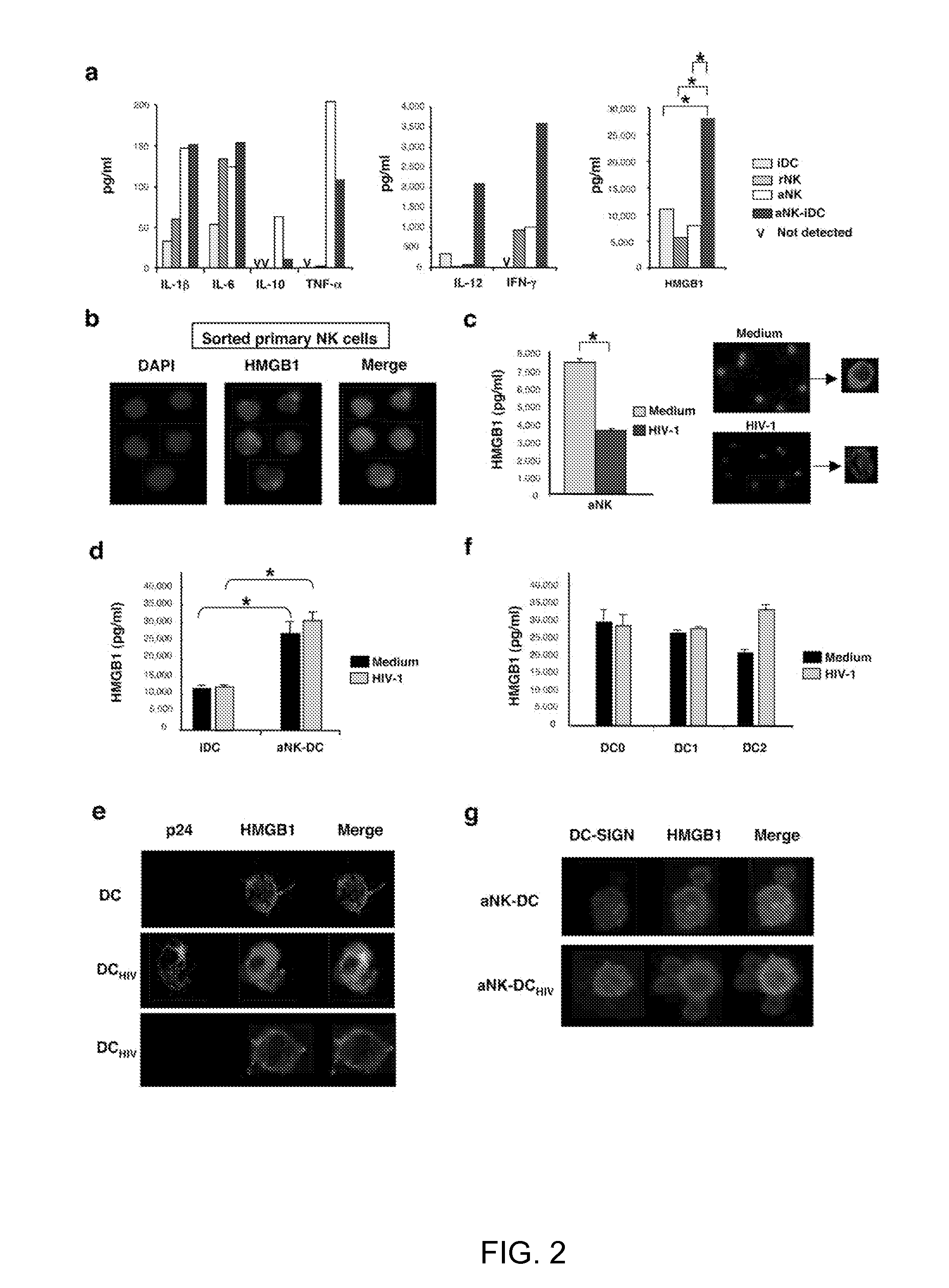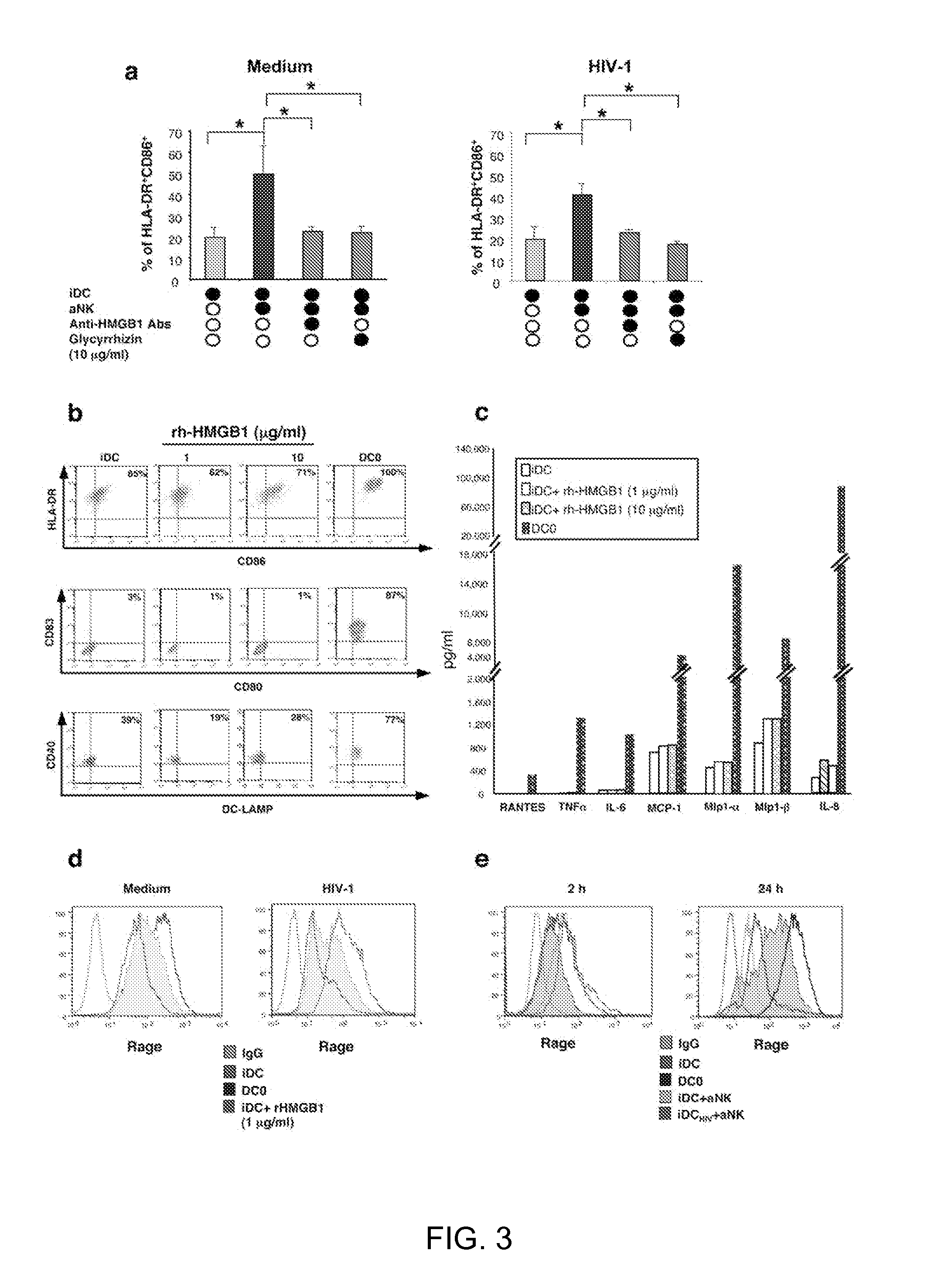Monitoring and inhibiting human immunodeficiency virus infection by modulating hmgb1 dependent triggering of hiv-1 replication and persistence
- Summary
- Abstract
- Description
- Claims
- Application Information
AI Technical Summary
Benefits of technology
Problems solved by technology
Method used
Image
Examples
example 1
Activated NK Cells Induce the Maturation of Autoloqous Primary Immature Dendritic Cells Infected with HIV-1
[0092]The role of NK cells on DC maturation was investigated by generating monocyte-derived DCs from isolated monocytes and coculturing them with NK cells purified from the same donor. NK cells were either resting (rNK) or activated by a combination of PHA and IL-2 (aNK). 24 h of coculture of aNK cells with autologous immature DC (iDC) induced either the survival or apoptosis of iDCs, dependent on NK-DC ratio, consistent with previous reports14. Indeed, aNK-DC ratio of 5:1 induced DC apoptosis, while 1:5 ratio induced DC survival. (FIG. 1a). iDCs survival at a NK-DC ratio of 1:5 was associated with their maturation, as shown by the increased coexpression of the maturation markers CD86 and HLA-DR (72.1% of CD86brightHLA-DRbright DCs were induced by aNK cells compared to 15.3% at baseline) (FIG. 1b), a feature of mature DCs. Under the same experimental conditions, rNK cells had a...
example 2
aNK-DC Cross-Talk Triggers HMGB1 Expression in Both NK Cells and DCs
[0094]In order to identify the molecules involved in aNK-dependent maturation of iDC, a multianalyte profiling (MAP) was employed to map the key cytokines produced in 24 h culture of iDC, NK cells and aNK:iDC. iDC released low amounts of IL-1β, IL-6 and IL-12, and they did not produce IL-10 or TNF-α. Following their coculture with aNK cells, a proinflammatory cytokine profile was induced, with a high increase in IL-12 secretion, significant levels of TNF-α and IFN-γ, both derived from NK cells, and no production of IL-10 (FIG. 2a). Interestingly, high levels of HMGB1 were detected in those culture supernatants, originating both from iDC and NK cells, and aNK:iDC cocultures resulted in a strong enhancement of HMGB1 concentration in culture supernatants (FIG. 2a). It was confirmed that at the single cell level, by confocal microscopy, that NK cells were able to produce HMGB1, detected in the nucleus of freshly isolate...
example 3
aNK-Dependent Maturation of HIV-1-Infected iDCs is Mediated by HMGB1 and Involves RAGE
[0095]To determine the possible involvement of HMGB1 in NK-dependent DC maturation, glycyrrhizin, which is known to interact specifically with soluble HMGB1 molecule31, was used as well as anti-HMGB1 antibodies (FIG. 3a). These inhibitors, added at the initiation of the 24 h aNKiDC coculture, reduced the proportions of mature DCs (identified as CD86brightHLA-DRbright) to the baseline level observed without aNK cells (FIG. 3a). Similar effect was obtained with infected DCs (FIG. 3a). rh-HMGB1 by itself did not induce phenotypic maturation of iDC, when treated for 24 h with 1 to 10 μg / ml rh-HMGB1, and similar data were obtained at 48 h of culture (FIG. 3b). Indeed, while spontaneous maturation of iDCs was observed after 48 h of culture in medium, as shown by the high percentage of CD86bright HLA-DRbright DCs, 10 μg / ml rh-HMGB1 only weakly increased from 65% to 71% the percentage of these cells. Inter...
PUM
| Property | Measurement | Unit |
|---|---|---|
| pH | aaaaa | aaaaa |
| pH | aaaaa | aaaaa |
| temperature | aaaaa | aaaaa |
Abstract
Description
Claims
Application Information
 Login to View More
Login to View More - R&D
- Intellectual Property
- Life Sciences
- Materials
- Tech Scout
- Unparalleled Data Quality
- Higher Quality Content
- 60% Fewer Hallucinations
Browse by: Latest US Patents, China's latest patents, Technical Efficacy Thesaurus, Application Domain, Technology Topic, Popular Technical Reports.
© 2025 PatSnap. All rights reserved.Legal|Privacy policy|Modern Slavery Act Transparency Statement|Sitemap|About US| Contact US: help@patsnap.com



